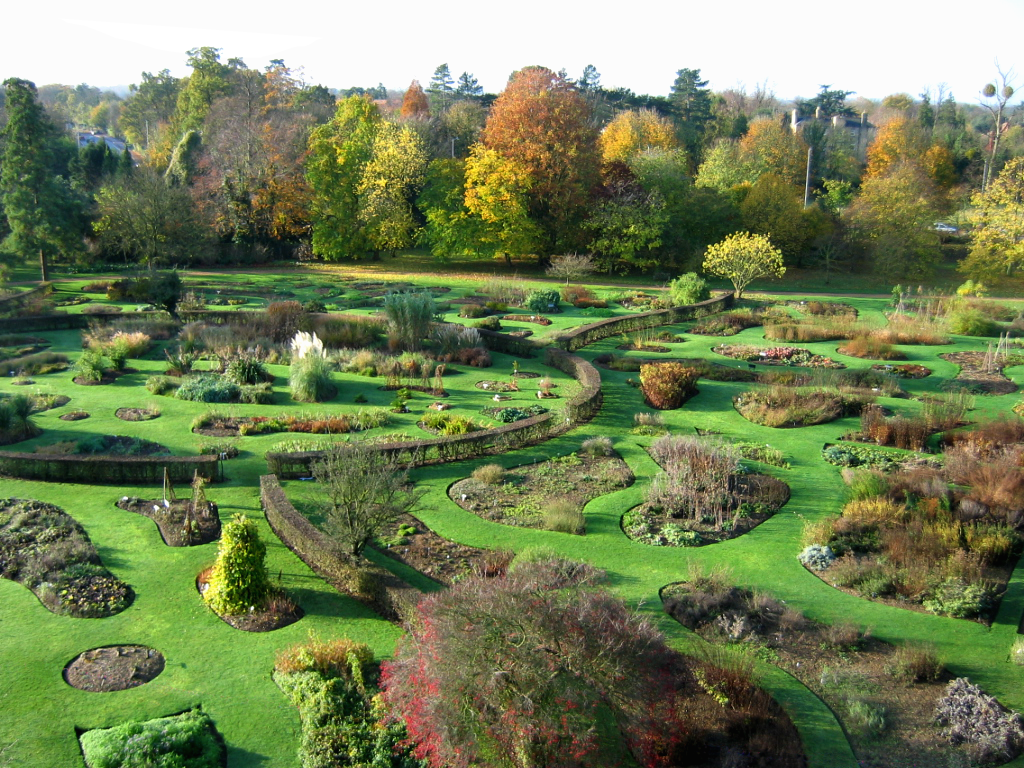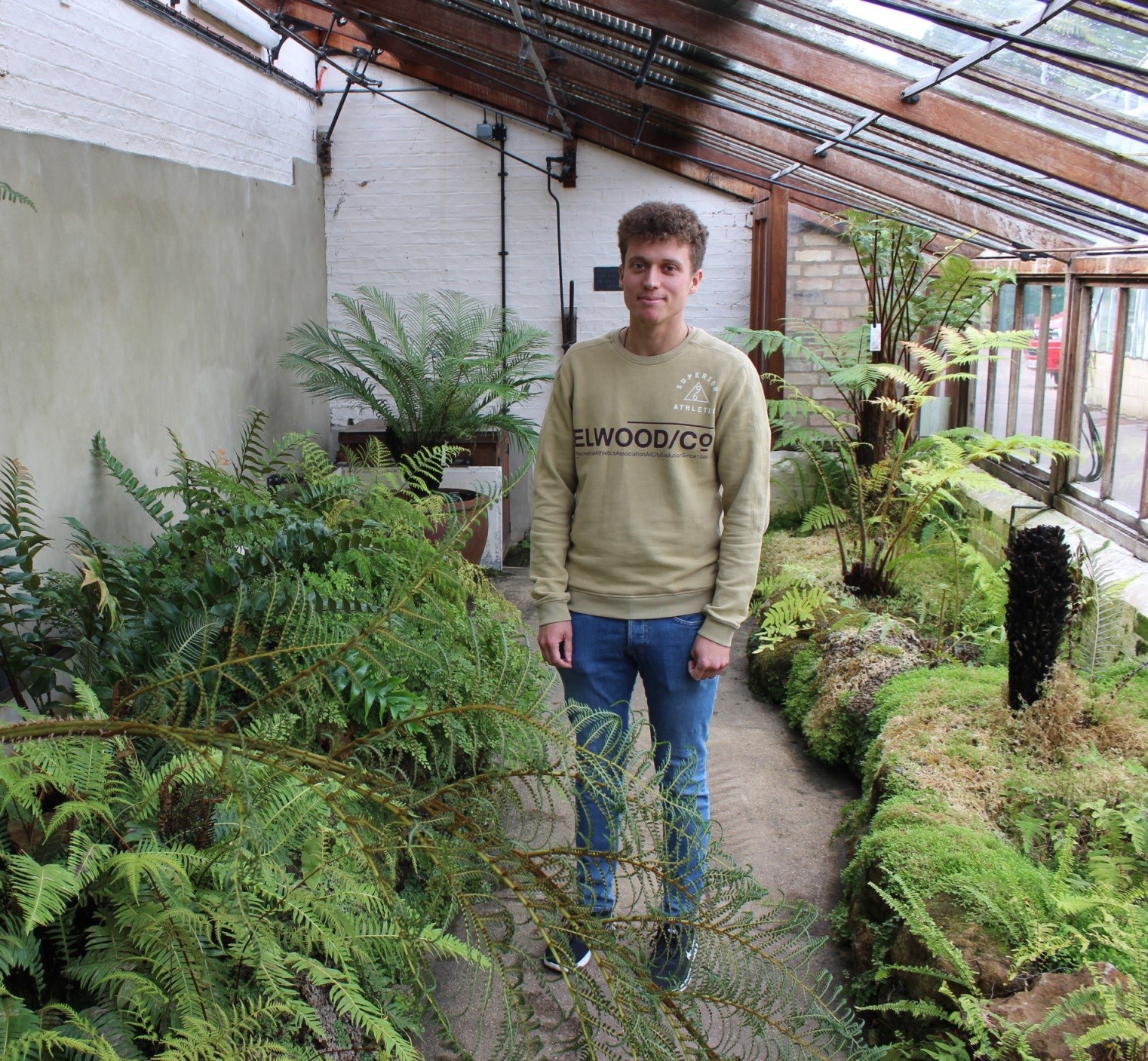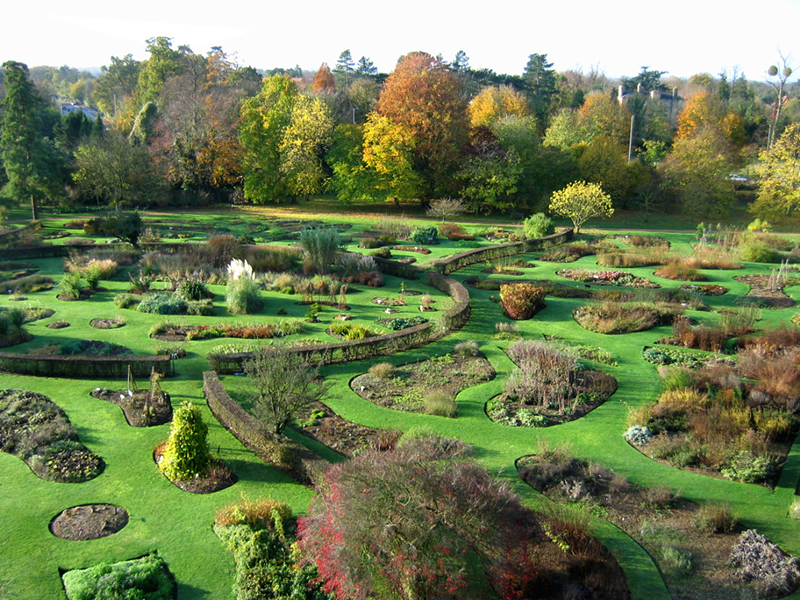 Patrick Hooper spent eight weeks as an intern at the Cambridge University Botanic Garden. During his time he contributed to the design and planning of a new interpretation hub to be built in the Garden in 2018, dubbed the Rising Path.
Patrick Hooper spent eight weeks as an intern at the Cambridge University Botanic Garden. During his time he contributed to the design and planning of a new interpretation hub to be built in the Garden in 2018, dubbed the Rising Path.
His work focused on researching relevant literature on the evolution of land plants as a possible theme for a future display. During his time, he also conducted several interviews with experts and horticulturalists at the garden and various staff at the University of Cambridge Museums (UCM) to gauge the feasibility of installing a new evolution garden. Patrick writes…
About me

I first came across this internship opportunity through the Get Involved page on the UCM website. I was immediately interested as the project involved research in two of my main areas of interest: plant biology and evolution. I am currently three quarters of the way through my Biology undergraduate degree at the University of Bath. Working at the Botanic Garden struck me as the perfect opportunity to expand the knowledge I had gained from my degree, all whilst working in a pretty spectacular environment. Having lived in Cambridge all my life, I have been a frequent visitor to the Garden and was well aware of the spectacular display of plants on show. So when I received my offer I was excited to make the Garden my office for the summer!
The Project
The Cambridge University Botanic Garden was successful in securing a grant from the Monument Trust to undertake a new 3-year project, titled ‘Understanding Plant Diversity’. With this project, the garden aims to rejuvenate their historic systematic beds. The systematic beds are one of the oldest features of the Garden and provide a representation of the amazing diversity of the largest group of land plants, the flowering plants. Alongside this, the Garden are in the process of finalising the design of a brand new observation deck and interpretation hub, named The Rising Path. The Rising Path will provide a new way of enjoying the abundance of flowers in the systematic beds.

My Role
Today there are nearly 300,000 species of flowering plant alone. And that’s just the species we know about! How these flowering plants and their non-flowering counterparts evolved is a complex story that ranges across 450 million years. The story begins with primitive water-based algae and continues to this day with the ever evolving array of plants around us. The systematic beds display a huge diversity of fruits and flowers, but still represent only a fraction of all known species. My role was researching the feasibility of providing visitors with further information and a possible garden explaining this incredible story of evolution. This will form part of the information provided in the new interpretation hub.
My work involved a combination of researching the relevant literature on plant evolution to present to the Garden staff. I also worked on gauging the views of the various experts and horticultural staff at the Garden on what would be achievable and desirable in a new evolution installation. The work was at times challenging but engaging. My role required me to be proactive in organising meetings with the various members of staff. Later I collated these views and alongside my research produced a scoping report. This report aimed to bring together the various possibilities for this exciting new project for the Garden.
The Outcomes
By the end of my internship, I had gathered the views of several of the staff at the Garden into a scoping report for senior management to discuss. I also developed a full species list for possible future planting. Hopefully, this work will contribute to future decisions on how to finalise this project and provide an engaging new display in the Garden. The main thing I gained from my internship was a much better understanding of horticulture and plant families. Before starting I had a very limited knowledge of plants, but I soon found I had a real interest in understanding plant cultivation. My time at the Garden has also greatly increased my appreciation for the importance of botanic gardens, both for their role in conserving and displaying vital plant species and for the beauty and tranquillity the Garden provides in the heart of a thriving city.
More information about this project can be found on the Botanic Garden’s website. You can also follow the progress of our work revitalising the Systematic Beds on Instagram at @cubgsystematics and the garden in general at @cubotanicgarden.







